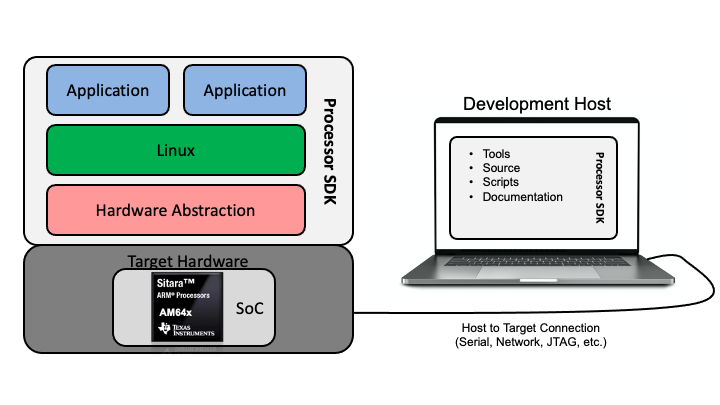1. Linux System Design¶
Overview
This Linux Academy module discusses possible ways to approach Linux System Design. This information provides insight into the hardware, software, and tools options provided by Texas Instruements to help users quickly and easily create their own embedded systems. This information is not a list of requirements. It can be thought of as a recommended roadmap or a list of suggestions.
A Linux Development System
A typical Linux Embedded System looks similar to the diagram below:

This system is a combination of hardware and software brought together with a variety of tools. A full development environment usually includes:
At least one target piece of hardware and associated software
A development host (usually a PC with its own hardware and software, including a number of tools). Tools help create or configure certain aspects of the target hardware or software. C compilers, assemblers, and linkers are examples of build tools.
In order for the embedded system to work well, the hardware and software must function together. The next sections will explore recommendations, documentation, and tools provided by TI to help create solid hardware and software for a new embedded system. This module wraps up with a system design checklist. The system design checklist helps to think through all the different aspects of the design in order to improve the overall development process.
